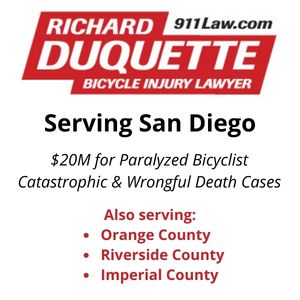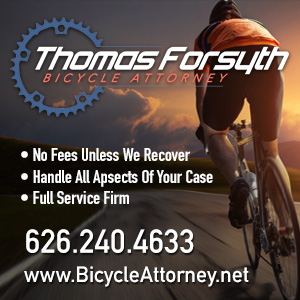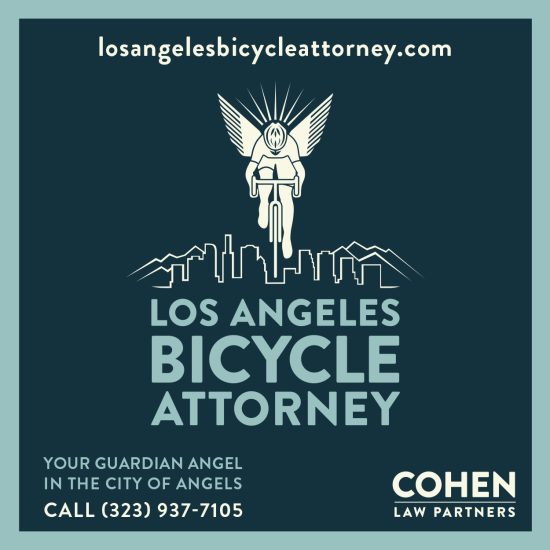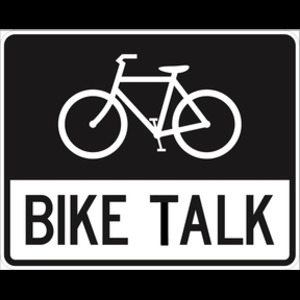
Here’s your chance to look good by helping out an injured rider.
Several months ago, a man who goes by the name of Hery reached out to me for help after he was injured by the driver of a car.
I gave him what advice I could; unfortunately, he’s still struggling, as the message below indicates.
Eight months ago while riding my bike to work I was hit by car. I woke up with wiring in my mouth and have been on disability ever since. Recently I was informed my Medi-Cal won’t be covering some medical expenses, and over these last 8 months I’ve also accumulated a lot of debt just trying to get by. So I’ve decided to design T-shirts to raise money for bills and other expenses.

This is what Hery’s bike looked like after he was injured in the crash
It’s a great looking design, and a good cause, helping someone get back on his feet after he was injured in a crash.
And it’s available on anything from T-shirts and hoodies, to stickers and coffee mugs.
………
A new bill passed by the state senate on Thursday would remove the ridiculous helmet requirement for dockless e-scooters — and the nearly $200 fines too many users have had to pay for breaking the law.
AB 2989 would also cap scooter speeds at their current 15 mph, while allowing cities to permit their use on more types of streets. Powered scooters are currently restricted to streets with bike lanes or speed limits of 25 mph or less.
The bill needs to return to the assembly before it goes to Governor Brown, where experience tells us it will face an uncertain fate.
………
Todd Munson does what I’ve often threatened to do, recording two minutes of scofflaw drivers running the stop sign near his home.
For everyone who complains that cyclists never stop at stop signs, I’d like to present this video of 15 drivers running a stop sign in our neighborhood in under 5 minutes. #BikeLA pic.twitter.com/MsdeVVO5cj
— Todd Munson (@themunson) August 24, 2018
I could do the same thing at either of the intersections closest to our apartment, with the same results.
Yet so many drivers seem to get apoplectic they see bike and scooter riders doing the same things they do every day.
………
Los Angeles bike riders have to fight to get a bike corral. Riders in the the Netherlands get this, instead.
https://twitter.com/BrooklynSpoke/status/1033274492821401600
Thanks to Byron Smith for the heads-up.
………
There was a time when Bike the Vote was more than a slogan, as an academic journal site remembers when bike riders were a political block courted by the GOP. And helped deliver the vote to William McKinley in 1896.
………
Evidently, it’s not just Los Angeles.
Lincoln, Nebraska residents and bike riders support a lane reduction on major street, while a business association predicts a traffic apocalypse and calls it the first salvo in the war on cars.
In Jacksonville FL, the city wants to remove lanes from a street to improve safety, but local residents insist they like it just the way it is.
And an Edmonton, Canada letter writer says a lane reduction and two-way cycle tracks don’t make any sense, and he can’t understand why bike riders wouldn’t prefer a quieter, tree-lined street. The answer is they probably would, if it went the same places, with no stops and with signalized intersections at major streets, because bike riders need to get where they’re going just like drivers do.
………
Local
LA Magazine previews the My Figueroa Complete Streets project, which will be officially unveiled this Thursday.
Streetsblog’s Joe Linton writes that a wealthy neighborhood gets street repairs on dangerous Griffith Park Blvd where a rider was injured, while a less well off neighborhood gets signs and a recommendation from the city attorney to remove the bike lanes instead of fixing them.
Curb extensions are installed on Pico Blvd to improve safety at Hauser and Curson. Although it clearly could have been the first step to installing protected bike lanes, instead.
State
An Oceanside bike rider is lucky to be alive after surviving a crash with a commuter train that left him with minor injuries. Let that be yet another reminder to never try to go around crossing gates, even if it appears to be safe at the time.
The San Diego Union-Tribune asks if the city is ready to eliminate parking requirements for downtown housing.
Members of Rich City Rides rode to Oakland’s city hall to protest the arrest of founder Najari Smith for Biking While Black.
Sad news from Austria, where beloved Oakland triathlete Alistair Eeckman was killed in a crash with a bus while on a training ride, just one day after finishing sixth in the Powerman Austria; he was just 23. Thanks to Matt Stewart for the news.
National
Streetsblog says America’s car culture is literally shortening your life.
Your next Uber may not have a driver — or four wheels. The ride-hailing company’s new CEO sees a shift to ebikes and scooters for short trips.
A Colorado couple literally wrote the book on cycling the Great Divide, with all proceeds going to the Adventure Cycling Association.
Sioux City, Iowa, has made progress when it comes to bicycling, but still has a long way to go.
Tour de France laterne rouge Lawson Craddock returns home to a hero’s welcome at Houston’s Alkek Velodrome, after raising what could be as much as $400,000 to rebuild it following last year’s Hurricane Harvey. And announces it will be the site of USA Cycling’s new Olympic development program.
A Texarkana TX newspaper gets it, explaining that the city’s new sharrows don’t actually change anything, since bicyclists already have a legal right to ride in the traffic lane, but simply remind drivers of that fact.
Around a thousand people turned out for a bike ride to honor a Milwaukee bicycling icon who founded a chain of bike shops and created bike paths across the US.
I want to be like him when I grow up. A Minnesota man rides his age to celebrate his 90th birthday, breaking it up into six 15 mile rides.
A Tennessee family has developed a device to fit on the handlebar ends on kids bikes, that will hopefully prevent puncture injuries that aren’t as rare as they seem. Something like that should be required for every kid’s bike sold; every year, several children are seriously injured or killed by worn bike parts.
Streetsblog says a single double-parked truck can undermine everything the New York Department of Transportation does to keep streets safe for cyclists and pedestrians, because it all falls apart without enforcement.
A DC bike advocate says our streets don’t have to make us unhappy.
A Florida singletrack rider rescued a baby raccoon by putting him in his backpack, and riding him to safety before the coyotes could get him. It may be cute, but most experts recommend against trying to rescue seemingly abandoned animals; chances are, the mother is hiding somewhere nearby.
International
Ottawa bike riders are taking to social media to try to track down their stolen bicycles.
Now that’s a close call. An Ottawa bike rider decides he needs to buy some lights after a driver makes a left turn directly in front of him in the dim twilight. Which he should have had long before this ever happened.
Speaking of close calls, a British bike rider was nearly sideswiped by a trailer pulled by a van in a near-miss caught on bike cam.
Pamplona has running with the bulls; Birmingham, England has wheelie-popping teens riding with the buses.
Tour de France winner Geraint Thomas says bike helmets should be made mandatory in the UK, adding “I’ve put on a helmet more times than I’ve buckled a seatbelt.” Then tries to walk it back the next day.
A New Zealand Op-Ed says there’s no need for a war between bicyclists and motorists; just slow traffic and build some decent infrastructure.
Competitive Cycling
A reminder of the dangers of amateur racing, as 30 riders went down in a mass crash in a Wisconsin race, sending four people to the hospital, and leaving a number of others with minor injuries.
Three years ago, Staci Nash was a two-time NCAA Division II track champ — the running kind, not cycling. Today, she’s a two-time national mountain biking champ.
Ritchie Porte says I beg your pardon, I never promised you I was going for the general classification in the Vuelta.
Speaking of the Vuelta, Deadspin calls it the strangest, hardest stage race of the cycling season, and predicts this year’s race will kick ass. Meanwhile, Cycling News says it’s the last chance for ten riders.
Great long read from Peter Flax, who recounts the strange happenings 70 years ago as two legendary racers faced off in the 1948 world championships, which neither one won.
Finally…
Sometimes riding down a freeway in rush hour traffic calls for nothing more than a g-string. Yes, you can still take a Sunday drive — as long as it’s on a bike.
And when you hear hoofbeats, stop and say hi.






















